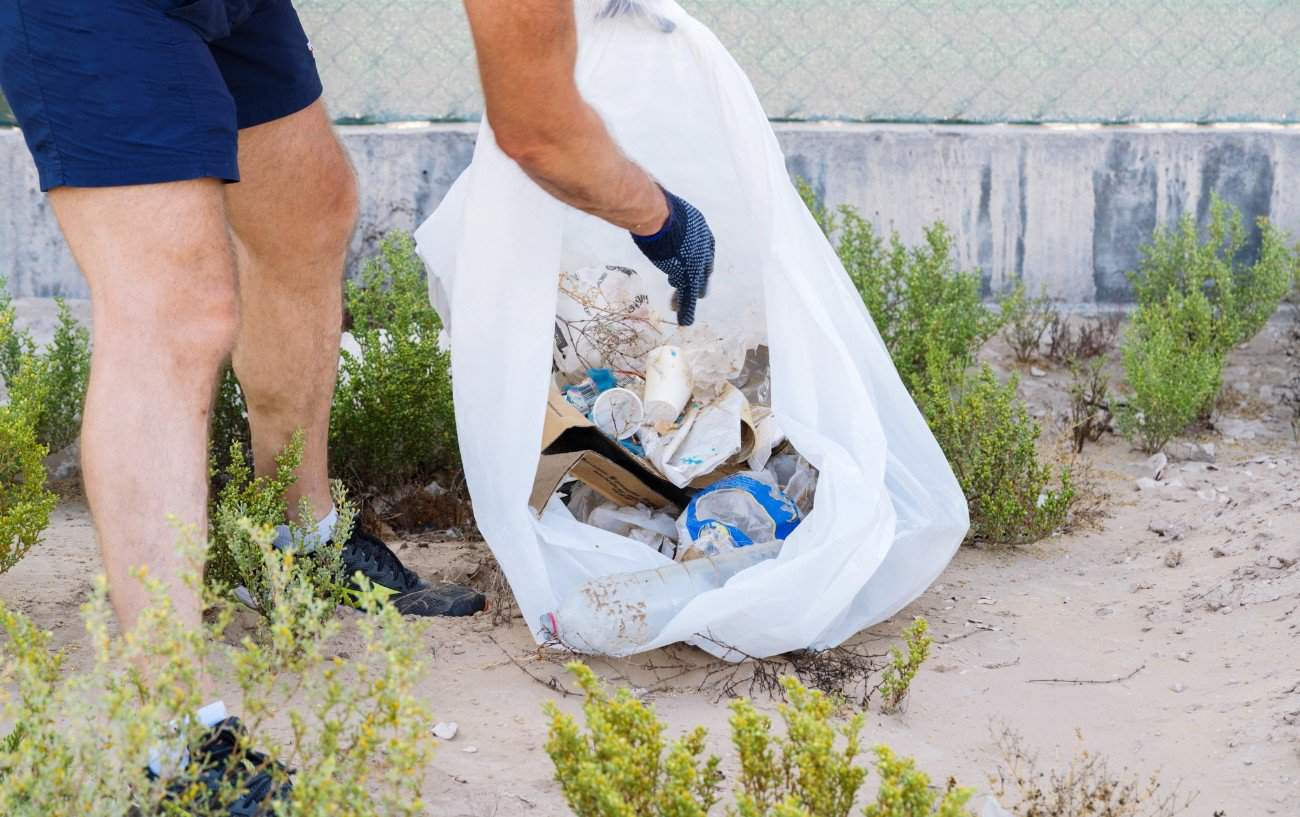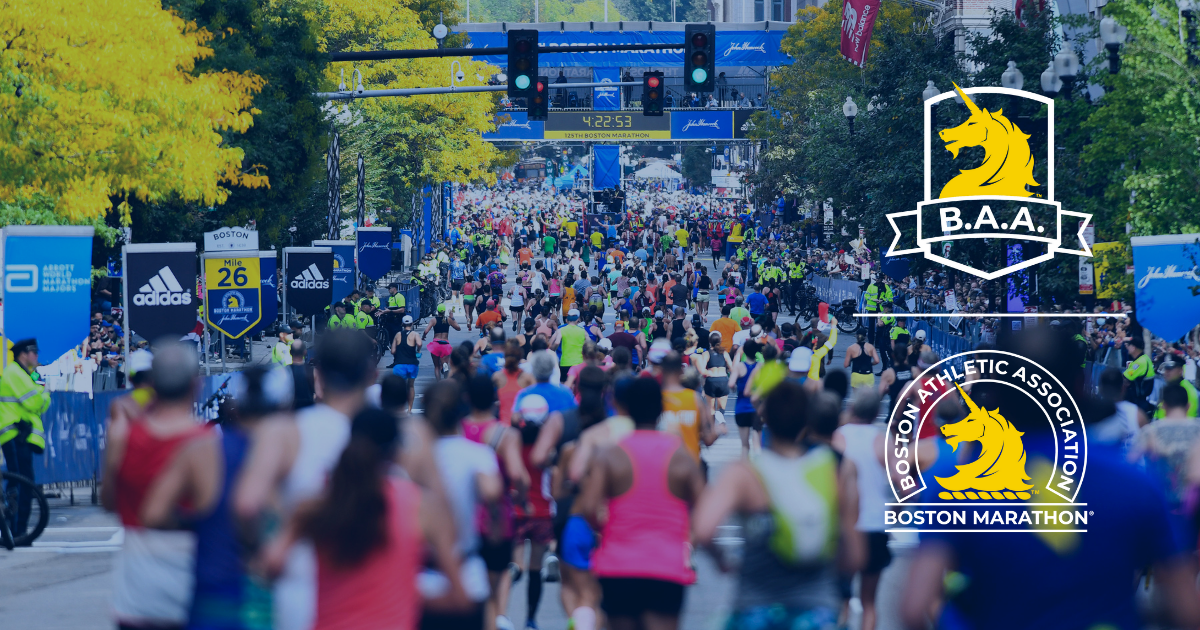The main thing that comes to mind, and Karen (pictured above with some other volunteers) could give more detail on it for sure, was the last 50 mile runner. Her mom is battling breast cancer so she didn’t have time to train for the race and she came into the turnaround and let us know she wouldn’t make the cutoff but was going to finish anyway. We happened to have Karen there and Karen assured her that we would have a buckle and she would be at the finish for her. So later in the day as we neared the cutoff, Karen and I were out at the second to last aid station for her setting her up a little station. We did the same thing at the last aid station and made sure we were at the finish. There was another gentleman whose name I forgot, who ran in with her to ensure she was safe and got there after his aid station was done for the day. It was an incredible thing to be a part of. From her determination, to all of us coming together to make sure she got to the finish because we know what it’s like the be the last runner out there. It was honestly one of the greatest things I’ve ever been a part of, just getting to come together and help her meet that goal she set for herself. It was a good reminder of why we all do this and why the ultra community is so special. We do whatever we can to help each other no questions asked and it’s just an amazing community to be a part of.
I am a runner striving, as the apostle Paul wrote in Colossians 3:17, to (joyfully) do everything, whether by words or actions, "in the name of the Lord Jesus, giving thanks to God the Father through him."
Monday, April 29, 2024
BASS PRO MIDWEEK MOTIVATION-Take a Turn Volunteering
The main thing that comes to mind, and Karen (pictured above with some other volunteers) could give more detail on it for sure, was the last 50 mile runner. Her mom is battling breast cancer so she didn’t have time to train for the race and she came into the turnaround and let us know she wouldn’t make the cutoff but was going to finish anyway. We happened to have Karen there and Karen assured her that we would have a buckle and she would be at the finish for her. So later in the day as we neared the cutoff, Karen and I were out at the second to last aid station for her setting her up a little station. We did the same thing at the last aid station and made sure we were at the finish. There was another gentleman whose name I forgot, who ran in with her to ensure she was safe and got there after his aid station was done for the day. It was an incredible thing to be a part of. From her determination, to all of us coming together to make sure she got to the finish because we know what it’s like the be the last runner out there. It was honestly one of the greatest things I’ve ever been a part of, just getting to come together and help her meet that goal she set for herself. It was a good reminder of why we all do this and why the ultra community is so special. We do whatever we can to help each other no questions asked and it’s just an amazing community to be a part of.
Death is Not the End
“‘You can enter God’s Kingdom only through the narrow gate. The highway to hell is broad, and its gate is wide for the many who choose that way. But the gateway to life is very narrow and the road is difficult, and only a few ever find it.” Matthew 7:13-14 NLT
Sunday, April 28, 2024
Sin is a Critical Condition
“So David gathered all the people together and went to Rabbah, fought against it, and took it.” 2 Samuel 12:29 NKJV
Thursday, April 25, 2024
Forget the Past
“Brothers and sisters, I do not regard myself as having taken hold of it yet; but one thing I do: forgetting what lies behind and reaching forward to what lies ahead, I press on toward the goal for the prize of the upward call of God in Christ Jesus.” Philippians 3:13-14 NASB
In an inspiring story published by the Bonner County Daily Bee on Wednesday, it was reported that on Monday, April 15, Sandpoint resident Carol Wright crossed the finish line at the 2024 Boston Marathon in 5 hours and 54 minutes, winning the 80-plus women’s age division handily. At 82, she also happened to be this year’s oldest finisher, and shows no signs of slowing down any time soon. Believe it or not, Wright’s running journey began not so long ago in 2012. Then 69 years old, Wright was on the phone with her daughter, Amy, who just got done running a 5K in Bellingham, Wash., as part of a weight-loss journey. Wright’s daughter said the following year she was going to run a half-marathon. “If I can do it, you can do it,” Wright remembers her daughter saying…Wright has now completed 18 marathons in her lifetime and has finished the Boston Marathon seven times, her first finish coming in 2016… Even at 82, Wright’s journey has arguably just begun, and she still has one lofty goal in mind — be the oldest person to ever finish the Boston Marathon. The record, which is 84 years old, was set by a female from Santa Monica, Calif., in 2018. Wright believes she is in good enough shape to eventually pull it off...
And you know, when it comes to lofty goals, our greatest aspiration at any age should be to be champions for Christ. Which means we must practice spiritual forgetfulness by no longer allowing ourselves to be influenced, held back, or affected by our former lives. You see, too often we allow ourselves to be weighed down by our previous sinfulness or shackled by our memories of past failures or mistakes. Paul clearly understood that he had no power to change the past (in the same way we don’t) and so chose to focus on the present instead, which meant “reaching forward
Heavenly Father, thank You for reminding us that our past doesn’t have to define us nor does it have the power to determine our future when we give our lives to You. Help us to run the race with all endurance Lord knowing that the pursuit of perfection will be worth it in the end when we see You face to face. It’s in your precious name we pray Jesus. Amen.
Happy Running!
Wednesday, April 24, 2024
Choose to Put in the Work
“Blessed is the person who does not walk in the counsel of the wicked, Nor stand in the path of sinners, Nor sit in the seat of scoffers! But his delight is in the Law of the LORD, And on His Law he meditates day and night.” Psalm 1:1-2 NKJV
In an inspiring story published yesterday by the Good News Network, it was reported that 19-year-old Lloyd Martin has become the youngest person ever to finish the London Marathon with Down Syndrome.
He ran continuously for the first 14 miles—a personal best—before switching to bouts of walking and jogging. In Lloyd’s words, it’s achieving his dream,” said his mom, Ceri Hooper. “Really anything is possible if you put your mind to it. With a bit of work, you can achieve it.” Hooper represented Wales internationally in track and field competitions, and ensured that her son Lloyd had all the training and motivation he needed when he set his mind on the task of a marathon. He had developed his strength and stamina mainly through 5k races.
Tuesday, April 23, 2024
BASS PRO MIDWEEK MOTIVATION - Add in Plogging to Keep Yourself Motivated
So let's take a look at what plogging (a Swedish trend that started back in 2016) is, what benefits there are to engaging in the practice often, and some tips to get started according to MARATHON HANDBOOK:
What is Plogging?
Plogging is a term made by enmeshing “jogging” with “plocka upp,” which is Swedish for “pick up.” Therefore, the plogging definition is an emerging fitness that involves picking up litter or trash while you run. It combines exercise and environmentalism in one fell swoop.
- Improves cardiovascular health
- Improves mood and makes you feel good about yourself
- Provides intrinsic motivation to exercise
- Increases self-esteem
- Increases mindfulness about environmentalism
- Provides a way to do interval training
- Gets you outside in the fresh air
- Helps you move your body in different ways
- Makes exercise more fun and distracting
- Gives back to your community
- Cleans up your community
- Varies your routes
- Protects wildlife
- Connects you online and builds social connections with other ploggers
Before you start, you’ll need to outfit yourself with the right gear to get the job done.
If you’re already running or jogging, you should have a good pair of running shoes and running apparel. Beyond that, you’ll need a good pair of gloves to protect your hands from broken glass, soiled products, and sharp and dirty litter items you may pick up, and a trash bag of some sort for collecting what you pick up.
Depending on the climate in which you live, your budget, and your interest in this new activity, you can invest in some durable work gloves, which will be warmer and more protective than cleaning gloves, or disposable latex or non-latex surgical gloves.
If you only imagine you’ll dabble a little in this fitness activity, inexpensive disposable gloves should suffice, but be careful to get something that seems rip-proof. Carrying hand sanitizer in your pocket is ideal for a quick cleanup after you are done collecting litter in one area and dispose of your bag of collected trash.
Theoretically, you can go plogging almost anywhere you have permission to be. Depending on where you live, you may encounter trash along the side of the roads, parks, school playgrounds, trails, parking lots, town squares and bike paths.
Just be careful to be mindful of traffic if you’re along the side of a road picking up litter, and respect any private property lines.
There’s no right or wrong way to get going. You can go alone, with your running friends, or in a big group.
You can structure your whole run around picking up trash the entire time, or you can run to a specific location—such as a local shopping mall parking lot—and plan to whip out your plogging gear and start picking up trash once you reach the location.
Ploggers are encouraged to take photos of their efforts and share them on social media to spread awareness and inspire others to join in on beautifying the environment while getting fit.
The following tips will help you stay safe and allow you to maximize the benefits of your new hobby:
- Always wear gloves: Gloves are imperative for protecting your hands.
- Obey traffic safety rules: If you’re along the side of a road, be mindful of vehicular traffic and heed traffic rules.
- Wear a safety vest: A reflective safety vest can increase your visibility to drivers and help keep you safe.
- Don’t touch your face: Your gloves should be considered contaminated, so keep them far from your face.
- Don’t pick up needles: Disposed sharps and needles can be dangerous. Don’t pick up items such as shards of glass, broken bottles, or other items you aren’t comfortable touching even with gloved hands.
- Use your knees: Use proper squatting technique—bending your hips and knees and sitting back when you squat down—rather than bending over from your back. Switch your load: If your bag of collected rubbish starts to get heavy, be sure to alternate the arm you are using to carry the trash bag to prevent muscle imbalances or one side of your body getting overworked.
- Scan the area before you start: Taking a quick visual surveillance of the area can help you spot any dangerous people and will also help you spot the areas of notable trash to get started with.
- Thoroughly wash and sanitize your hands when you are done: Proper hygiene is key to preventing infection.
- Dispose of the trash and recycling properly: You can visit sites like https://dnr.mo.gov/waste-recycling/reduce-reuse-recycle to learn what can be recycled and where it can be done in your area.
- Post your plogging adventures: This new activity has spread around the world due to social media posts. Keep spreading the movement by posting your plogging picture with the hashtags #DoBeautifulThings and #Plogging.
- Gather a group: Plogging is a great group activity and you can cover more ground when you’re picking up trash with friends.
- Plan ahead: Set a goal and make a plan before you head out plogging. How long do you want to be gone? Do you have a distance goal? Do you want to collect a certain number of pieces of litter? A goal can make plogging more motivating and can give you a start and end to the outing.
- Play games: To make plogging more fun, play games with yourself. Try to find a piece of trash that starts with every letter of the alphabet, or try to get 100 snack bags, or look for a piece of litter for each color of the rainbow.
Monday, April 22, 2024
When Dreams Come True
“It is pleasant to see dreams come true, but fools refuse to turn from evil to attain them.” Proverbs 13:19 NLT
In a story titled “Pittsburgh-area runner wins women's Hakuna Matata 10-Miler at Walt Disney World” published Sunday it was reported that Mars, Pa. native Emily Hensel (1:05:26) beat her time from last year to be the first woman to cross the finish line again. She narrowly defeated Orlando-area runner Kelly Stoll, who finished just 28 seconds behind her, and Jennifer Masamitsu of Denver, Colorado (1:06:46). "It's like a dream come true,'' Hensel said after the race. "I absolutely love running. I love Disney. I love coming here with my family. And they were all hoping I would cross first since we came down here, so it just feels amazing that I was able to do it two years in a row.''
Sunday, April 21, 2024
Watch and Gauge their Actions
“They profess to know God, but in works they deny Him, being abominable, disobedient, and disqualified for every good work.” Titus 1:16 NKJV
In a story titled “Beijing half marathon winner stripped of medal after video shows competitors allowing Chinese runner to win” published last week, it was reported that the trophy and treasure China’s top distance runner, He Jie, gained at the Mengniu Beijing Half Marathon on April 14 were indeed ill-gotten ones as most everyone suspected. Organizers announced the decision after footage from the race went viral over the weekend. Video evidence from the final moments of the race showed He trailing behind Kenya's Robert Keter and Willy Mnangat and Ethiopia's Dejene Hailu. Mnangat told BBC Sport Africa that the group had not been not running competitively, but rather as pacemakers for He. An investigation into the incident found that four runners had, in fact, been invited by a race sponsor to serve only as pacemakers, but the main organizers were unaware of this… All four runners, including He, were disqualified and forced to return their medals and award money.
Thursday, April 18, 2024
Be Willing to Go Out
“And when Jesus heard it, he said to them, “Those who are well have no need of a physician, but those who are sick. I came not to call the righteous, but sinners.’” Mark 2:17 ESV
Wednesday, April 17, 2024
Ill Gotten Treasures Won’t Last
“Ill-gotten treasures have no lasting value, but righteousness delivers from death.” Proverbs 10:2 NIV
In a story titled “Beijing half marathon under investigation after video appears to show competitors let Chinese runner win” published Tuesday, it was reported that Race officials are investigating a half-marathon in Beijing after videos online have led to overwhelming speculation that three African runners appeared to slow down in order to allow China's top long-distance runner, He Jie, to finish ahead of them. He, who won the Asian Games men’s marathon last year and holds the Chinese national record in the event after finishing the Wuxi Marathon with a time of 2 hours, 6 minutes and 47 seconds, came in first place at the Mengniu Beijing Half Marathon on Sunday. He finished the race with a time of 1 hour, 3 minutes, 44 seconds. But controversy arose in the final moments of the race when a live stream of the event showed one of the runners appearing to usher He, who was trailing behind the pack, forward.
Tuesday, April 16, 2024
BASS PRO MIDWEEK MOTIVATION - What we can Learn from Boston Qualifiers
This shouldn’t be that surprising. The more you run, often the faster your marathon time will be. But the difference in mileage between BQers and non-qualifiers is quite staggering.
According to Strava’s data, in the 12 weeks leading up to a marathon, male BQers ran almost twice as many miles than male non-qualifiers. During the cycle, the average male qualifier ran just below 560 total miles. The average male non-qualifier completed just below 300 miles.
The results are similar for females: BQers completed roughly 480 total miles during training while non-qualifiers completed about 282 miles.
Average peak mileage for all runners came three weeks out from their marathon, but again there was a gap. Male and female BQers (59.67 and 54.03 miles, respectively) hit a much higher point for weekly mileage than male and female non-BQers (42.84 and 40.06).
For both men and women, the numbers show that BQ runners squeeze in nearly two more runs per week than those who didn’t qualify. Male qualifiers logged the most runs per week, averaging 7.05 runs in seven days. Women qualifiers averaged 6.70 runs per week.
3. BQers run at different times
If you hate training in the morning, rejoice! Strava found no significant difference between BQers and non-qualifiers in terms of what time of day they logged miles.
However, the findings did discover that women in general (whether they qualified or not) tend to run more in the morning than the afternoon. Roughly 57 (non-BQ) to 60 (BQ) percent of the female runners analyzed went on runs before noon.
Men, on the other hand, were split nearly 50/50 on morning versus evening runs, regardless of whether or not they earned the BQ.
4. BQers know when to take it easy
Male qualifiers ran 15 percent of their training runs at marathon pace or faster. For the other 85 percent of their miles, they ran slower than the qualifying standard pace, signaling that they only cranked up the effort for important workouts. In comparison, male non-qualifiers may be going too hard, too often. Fifty-seven percent of their runs were done at their BQ marathon pace or faster. It was a similar story for women. Twenty-three percent of training runs by BQers were completed at marathon pace or faster versus 64 percent of runs at marathon pace by non-qualifiers.
These findings support a golden standard of marathon training: easy runs should be easy, and hard runs should actually be hard.
Though BQers tend to vary their pace significantly more than non-qualifiers (see insight No. 4), their average pace per mile over the 12-week training cycle was still significantly faster than non-qualifiers.
Men who earned their ticket to Hopkinton averaged about a 7:45 minute-per-mile pace across all of their training runs. Women BQers averaged about an 8:30 pace.
That is compared to about an 8:50 average pace for non-qualifying men and a 9:50 pace for non-qualifying women.
Strava was also able to track how many photos each user posted after runs, finding that on average (for both men and women) those who earned a qualifying time posted photos about 30 percent less than their non-qualifying counterparts.
The company does note, however, that BQers of both genders have nearly double the amount of followers on their Strava than those who did not qualify. Maybe having others watching your training gives you an extra push? Female BQers had 89 followers versus 41 for non-BQers, and male qualifiers had 81 followers compared to 45 for those who didn’t qualify.
Monday, April 15, 2024
Run to Win
“Don’t you realize that in a race everyone runs, but only one person gets the prize? So run to win!” 1 Corinthians 9:24 NLT
In a story titled “Sisay Lemma wins Boston Marathon men's race in runaway” posted by ESPN yesterday, it was reported that Sisay Lemma scorched the first half of the Boston Marathon course Monday, setting a record pace to build a lead of more than half a mile. Then the weather heated up, and the 34-year-old Ethiopian slowed down. After running alone for most of the morning, Lemma held on down Boylston Street to finish in 2 hours, 6 minutes, 17 seconds -- the 10th-fastest time in the race's 128-year history."I decided that I wanted to start fast early," said Lemma, who dropped to the pavement and rolled onto his back, smiling, after crossing the finish line. "I kept the pace and I won." Wow right? That averages out to a 4:50 mile for 26.2 miles! Can you imagine keeping that pace for that long?
Sunday, April 14, 2024
Trust Drives out Fear
“Whenever I am afraid, I will trust in You.” Psalm 56:3 NKJV
As a longtime marathon runner, I’ve come to know that one of the biggest hindrances to running a 26.2 mile race well is the heat. Which is the very reason today’s forecast for the Boston Marathon (and the consequences of higher temps) as reported by WBZ News yesterday has me concerned: Those preparing to run the race are probably feeling somewhat apprehensive. According to experts, ideal marathon temperatures are between 46 and 59 degrees, so temperatures in the high 60s are considered "hot." What happens to marathon runners in the heat? Running in higher temperatures is not only uncomfortable but can raise a runner's core body temperature leading to hyperthermia. Mild to moderate hyperthermia can cause muscle cramps, abdominal cramps, lightheadedness, headache, nausea and vomiting, and clammy skin. But as it progresses, hyperthermia can lead to confusion, seizures, organ failure, and death. Generally, a body temperature above 104 degrees is considered severe hyperthermia. Unfortunately, the runners have no control over the weather, but they can increase their chances of finishing by slowing down, hydrating well, pouring water over their head, and wearing the right clothing.
Thursday, April 11, 2024
Look for Ways to be a God-send
“Jesus said to them again, “Peace be with you. As the Father has sent me, even so I am sending you.’” John 20:21 ESV
Wednesday, April 10, 2024
Created Different for a Reason
“So God created man in His own image; in the image of God He created him; male and female He created them.” Genesis 1:27 NKJV
In an article titled, “Are women better endurance athletes than men?” published Tuesday, the writer, in an attempt to answer the question, shared the results from a recent study: RunRepeat's study analysed 5,010,730 results from 15,451 ultrarunning events over 23 years, concluding that the longer the race distance, the shorter the gender pace gap. At the 5K distance, men ran 17.9% faster than women, but at the marathon distance, this reduced to 11.1%. Over 100-mile races, men only had a 0.25% advantage, and for races above 195 miles, women were recorded as 0.6% faster than men. And while there are a lot of other factors that must be considered in order to definitively determine which sex is a “better” endurance athlete, one thing is certain—men and women are biologically different but capable of conquering long distances in their own unique way.
Tuesday, April 9, 2024
BASS PRO MIDWEEK MOTIVATION - Ample Sleep is Needed for High Performance
Sleep allows the body to recover. Because of this, athletes tend to need more sleep than the general population. Most runners require 7-9 hours of sleep per night, possibly closer to 8-10 hours during intense training blocks.* Inadequate sleep can impact the immune system and increase your risk of getting sick. If you’re consistently getting only a few hours of sleep, you’re going to feel it; before you know it, your body will force you to rest when you’re not expecting it. Isn’t it better to get good sleep and train than not do so, fall sick, and then be finally forced to rest?
When you hit the sack after a long day of strenuous exercise, your body finally gets to rest. During that sleep, your body releases growth hormones that help repair cellular and tissue damage, invigorate muscle growth, and stimulate bone building. This makes you better prepared for working out the next day. Over time, you adapt to your training better when you sleep well since your body has an adequate opportunity to recover from training.
For any runner, it is important to maintain cardiovascular health. Sleeping at night helps ensure blood is circulated to all parts of the body. When you’re in deep sleep, your heart rate and breathing continue to change which promotes cardiovascular health. Also, adequate sleep duration is associated with a lower risk of heart disease, asthma, COPD, and metabolic diseases.*
A good night’s sleep may help fight fatigue, making one more alert and charged for a run. A study published in the European Journal of Applied Physiology found that even one night of severe sleep deprivation may cause individuals to fatigue sooner on hard efforts. The sooner an individual fatigues, the slower the run may be.
According to a review published in Current Sports Medicine Reports, inadequate sleep can impair your endurance. Whether you are running a 5K or a marathon, running is an endurance sport – so you want your endurance to be as high as possible. Athletes who sleep less tend to have lower glycogen stores, which means they are unable to produce as much energy in long-distance training runs or races.
Eliminate caffeine later in the day: Caffeine is a stimulant – it makes you more alert. Alertness is exactly what you want at your morning meeting, but not what you want when you are trying to fall asleep at night. Caffeine lingers in your system for several hours after consumption, so you may want to avoid consuming caffeine anytime in the afternoon or evening.
Eat sleep-inducing foods: According to a review published in Nutrients, certain foods can help you fall asleep faster and stay asleep throughout the night. Carbohydrates, tryptophan-rich protein (such as milk, cheese, poultry, pumpkin seeds, and beans), tart cherries, and magnesium-rich foods all promote better sleep quality.























